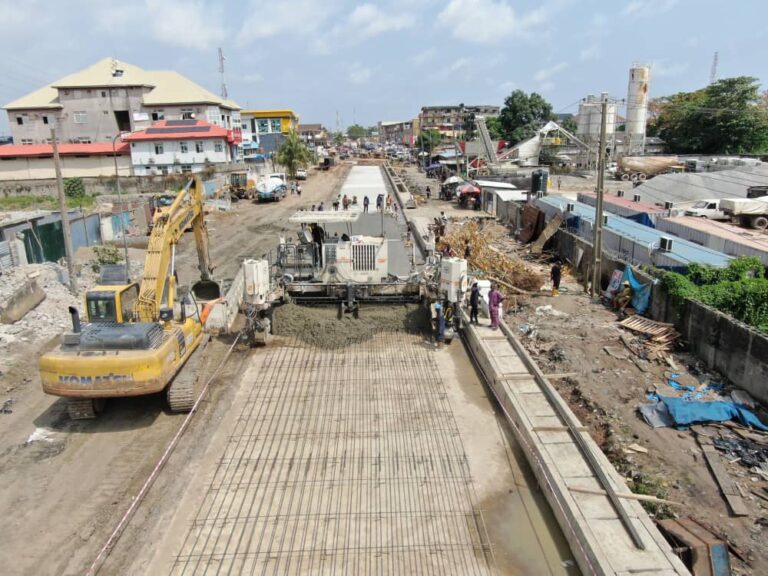Lagos Government has reaffirmed its commitment to delivering the first phase of the ongoing reconstruction of Old Ojo Road in Amuwo-Odofin Local Government Area of the state in December.
A statement issued on Tuesday in Lagos by Director of Public Affairs, Ministry of Works and Infrastructure, Mr Shina Odunuga, said that the contractor was working assiduously on completing the project as scheduled.
“The project is progressing steadily and it’s at over 20 per cent completion,” Odunuga said.
He said that the state government decided to upgrade the road, located at Oriade area of Amuwo Odofin council area, from a 7,650m single lane dilapidated road to a dual carriageway.
Odunuga said that the dual carriageway would serve as a strategic by-pass for motorists from Kirikiri area in Ajeromi Ifelodun Local Government Area to Ojo Local Government Area.
He said that the state government awarded the contract for the reconstruction project in July 2022 and commenced work on Aug. 24, 2022.
“For convenience of delivery, the road, which is also parallel to Lagos-Badagry expressway from Mazamaza to Trade Fair, was divided into two phases.
“The first phase, with a length of 4000 meters with average width of 15.2m, spanning from Irede road to Oluti bus stop, was awarded to Messrs CCECC Nigeria Ltd., with a stipulated completion period of 18 months.
“It also has 17 adjoining roads, with each having a length of 10m to be delivered in the contract,” he said.
Odunuga said that upon completion, aside complementing the Lagos-Badagry expressway, the project would ease transportation of goods and services to jetties along the corridor.
According to him, the project is also expected to generate direct and indirect employment and increase property value within the area.
“What is more, the road project will encourage additional industrial development in the zone and improve the socio-economic development of Amuwo Odofin division,” he said.
He listed the scope of work for the project to include: right-of-way recovery, relocation of public utilities and construction of reinforced concrete drains, with concrete cover as walkways.
Others, according to him, are: provision of median barriers, sand-cement stabilisation, concrete rigid pavement, longitudinal and transverse service ducts, cross culverts and outfall drains at specific locations.
Also included were: provision of streetlights with power generating sets, traffic signalisation with sensors, bus shelter at lay-by locations, kerb painting and lane markings, among others. (NAN)


